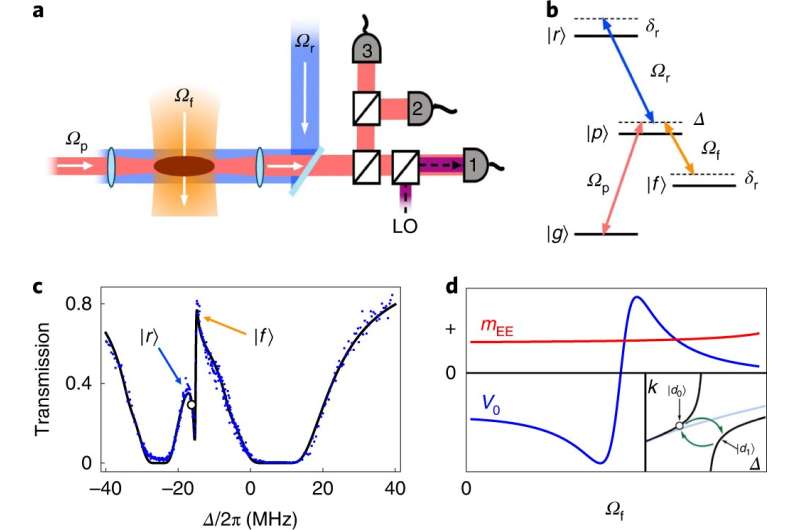June 9, 2020 report
Method found for making photons repel each other in an ultracold atomic gas

A team of researchers from MIT, Harvard University and the University of Belgrade has found a way to make photons repel each other inside a cloud of ultracold atomic gas. In their paper published in the journal Nature Physics, the group describes experiments they conducted that involved coupling pairs of photons to atomic states and what they learned from them.
Photons do not have mass or charge, which is why they have little to no effect on each other as they cross paths; they neither attract nor repel one another. But forcing them to attract or repel each other could allow researchers to create unique materials. Scientists have been investigating ways to force them to do so using a variety of tricks. Back in 2013, for example, two of the members of the current team worked together on a project in which photons were made to attract one another given the right circumstances—by shooting them into a cloud of ultracold gas, which put them into a Rydberg state, making them slightly sticky with one another. Attempts to use a similar technique were disappointing, however, because it required shifting the refraction index in opposite directions.
In this new effort, the researchers have tried a similar approach with a new twist—coupling pairs of photons at the same time to two atomic states in the same atom, twice. This allowed the team to tune the wavelength of the light to force the photons to exit the gas cloud at the same time—a means of proving that polaritons can attract or repel each other. And that allowed them to demonstrate three-body repulsion between the quasiparticles.
The researchers note that having demonstrated both attraction and a repellant force with photons raises the possibility of doing both at dissimilar distances—short-distance repulsion, long-distance attraction, for example—and the idea of creating molecular type structures out of them. They envision structures with a crystalline order that would be unlike anything found in nature—and materials with changeable parameters that would not be possible using natural matter.
More information: Sergio H. Cantu et al. Repulsive photons in a quantum nonlinear medium, Nature Physics (2020). DOI: 10.1038/s41567-020-0917-6
Journal information: Nature Physics
© 2020 Science X Network





















